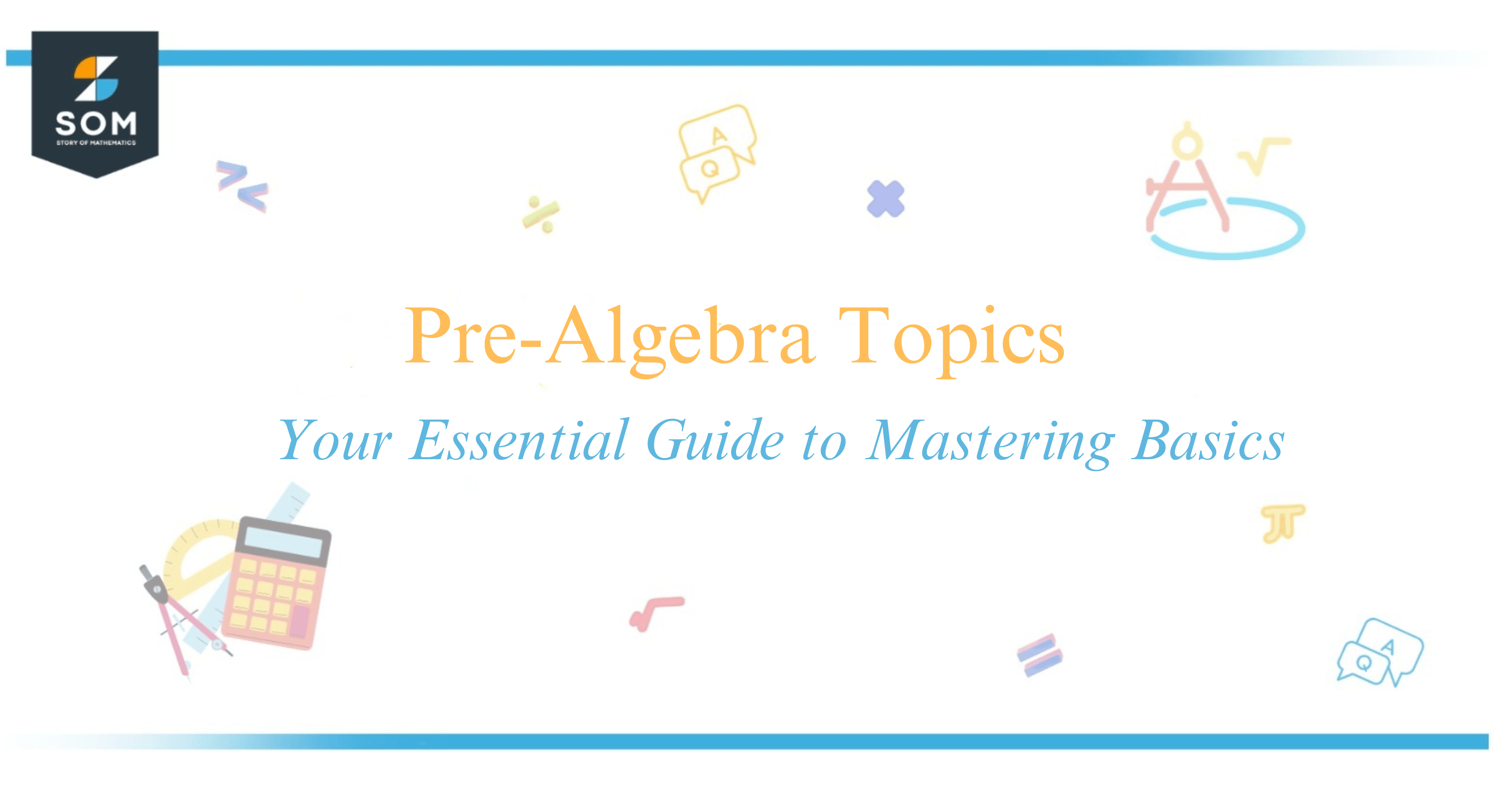JUMP TO TOPIC

Pre-algebra is an essential branch of mathematics that serves as the foundation for higher-level courses in mathematics. As a student moves towards high school, the skills and concepts learned in this phase become crucial building blocks for success in algebra and beyond.
Pre-algebra encompasses a broad range of topics that include basic arithmetic operations, factors and multiples, and an introduction to variables and algebraic expressions. While navigating through various mathematical landscapes such as geometry and statistics, students also learn about ratios, percentages, and exponents, all of which are presented in a way that lays the groundwork for the more complex equations and functions encountered later.
Pre Algebra Concepts
Pre-algebra is a fascinating area of mathematics that bridges the gap between basic arithmetic and algebra. It introduces me to the foundational concepts and skills that I need for higher-level math.
Basic Number Types and Operations
I find that pre-algebra deals with various types of numbers including:
- Whole numbers: These are 0, 1, 2, 3, and so on.
- Integers: This encompasses whole numbers and their negatives, such as -3, -2, -1, 0, 1, 2, 3.
- The rational numbers: They can be expressed as a fraction $\frac{a}{b}$ where a and b are integers and $b \neq 0$, like $\frac{1}{2}$ or $0.75$.
- Irrational numbers: Numbers that cannot be expressed as simple fractions like $\pi$ and $\sqrt{2}$.
- Real numbers: A combination of rational and irrational numbers.
Here’s an overview of the arithmetic operations that I apply to these numbers:
| Operation | Representation | Example |
|---|---|---|
| Addition (+) | $a + b$ | $3 + 2$ |
| Subtraction (−) | $a – b$ | $5 – 2$ |
| Multiplication (×) | $a \times b$ | $4 \times 3$ |
| Division (÷) | $a \div b$ or $\frac{a}{b}$ | $8 \div 2$ |
| Exponentiation | $a^b$ | $2^3$ |
Core Pre-Algebra Concepts
Moving beyond arithmetic, pre-algebra introduces me to the world of algebraic expressions, which combine numbers (constants), variables, and operations. For example, an expression like $3x + 2$ combines the variable $x$ with numbers through multiplication and addition.
- Variables: These are symbols that represent unknown values, like $x$ or $y$.
- Coefficients: Numbers that multiply a variable, e.g., in $4y$, 4 is the coefficient.
- Expressions: Combinations of variables, numbers, and operations, such as $3x + 2$.
- Equations: Statements that two expressions are equal, for example, $2x + 3 = 7$.
One of the vital skills I learned in pre-algebra is how to manipulate and simplify expressions and solve equations.
Factorization and Number Theory
I discovered the concept of factors—numbers that divide another number without leaving a remainder. Factorization breaks down a number into its constituent factors. For instance, factors of 6 are 1, 2, 3, and 6. Furthermore, prime factorization reveals the prime numbers that multiply together to create the original number. For example, the prime factorization of $18$ is $2 \times 3 \times 3$ or $2 \times 3^2$.
Ratios and Proportions
Pre-algebra also teaches me about ratios and proportions, which are ways to compare numbers. A ratio like $3:4$ or $\frac{3}{4}$ shows the relationship between two quantities. Proportions, such as $3:4 = 6:8$, confirm that the two ratios are equal.
Patterns and Operations
Lastly, I explore patterns and sequences, which helps me to predict the next numbers in a series using logic and algebraic thinking. The order of operations, also known as PEMDAS (Parentheses, Exponents, Multiplication and Division, Addition and Subtraction), guides me in performing calculations in the correct sequence. For instance, in the expression $3 + 4 \times 2$, I do the multiplication first to get 11, not 14.
Algebraic Expressions and Equations
In the study of pre-algebra, I find algebraic expressions and equations form the cornerstone. An algebraic expression represents a mathematical phrase including numbers, variables, and operations. For instance, the expression $3x + 2$ combines the variable $x$, numbers 3 and 2, and the operation of addition.
| Term | Definition |
|---|---|
| Exponent | Indicates the power to which a base is raised |
| Polynomial | An expression with one or more terms, with non-negative integer exponents |
| Linear | Relates to a line or first-degree expressions like $ax + b = c$ |
The linear equations like $2x + 4 = 8$ are solvable by isolating the variable to find its value, which in this case is $x = 2$. When equations involve two steps or more, such as $3(x – 2) + 4 = 13$, they require a sequence of inverse operations to solve. Slope, a key concept in graphing linear equations, reflects the steepness of a line. It’s calculated by the ratio of the vertical change to the horizontal change between two points on the line, expressed as $\frac{rise}{run}$.
Conclusion
I’ve enjoyed exploring the landscape of pre-algebra, a subject fundamental to the mathematical journey. We’ve seen that it covers pivotal concepts such as factors and multiples, number patterns, ratios, and the introduction to variables and expressions. Having a solid grasp of these topics isn’t just about passing tests; it’s about building a strong foundation for future studies in algebra and beyond.
I find that understanding the practical aspects of pre-algebra, such as solving first-degree equations like ( x + 5 = 12 ), can be especially rewarding. It gives me a sense of accomplishment to work through a problem and find the right solution. And while the subject might seem daunting at first, with practice, anyone can master these essential concepts.
Remember, fluency in pre-algebra sets the stage for tackling complex mathematical challenges. Whether I’m simplifying expressions or working through ratios and rates, these building blocks will support my academic growth. With each problem solved and each concept understood, I step closer to unlocking the full potential of mathematics.
